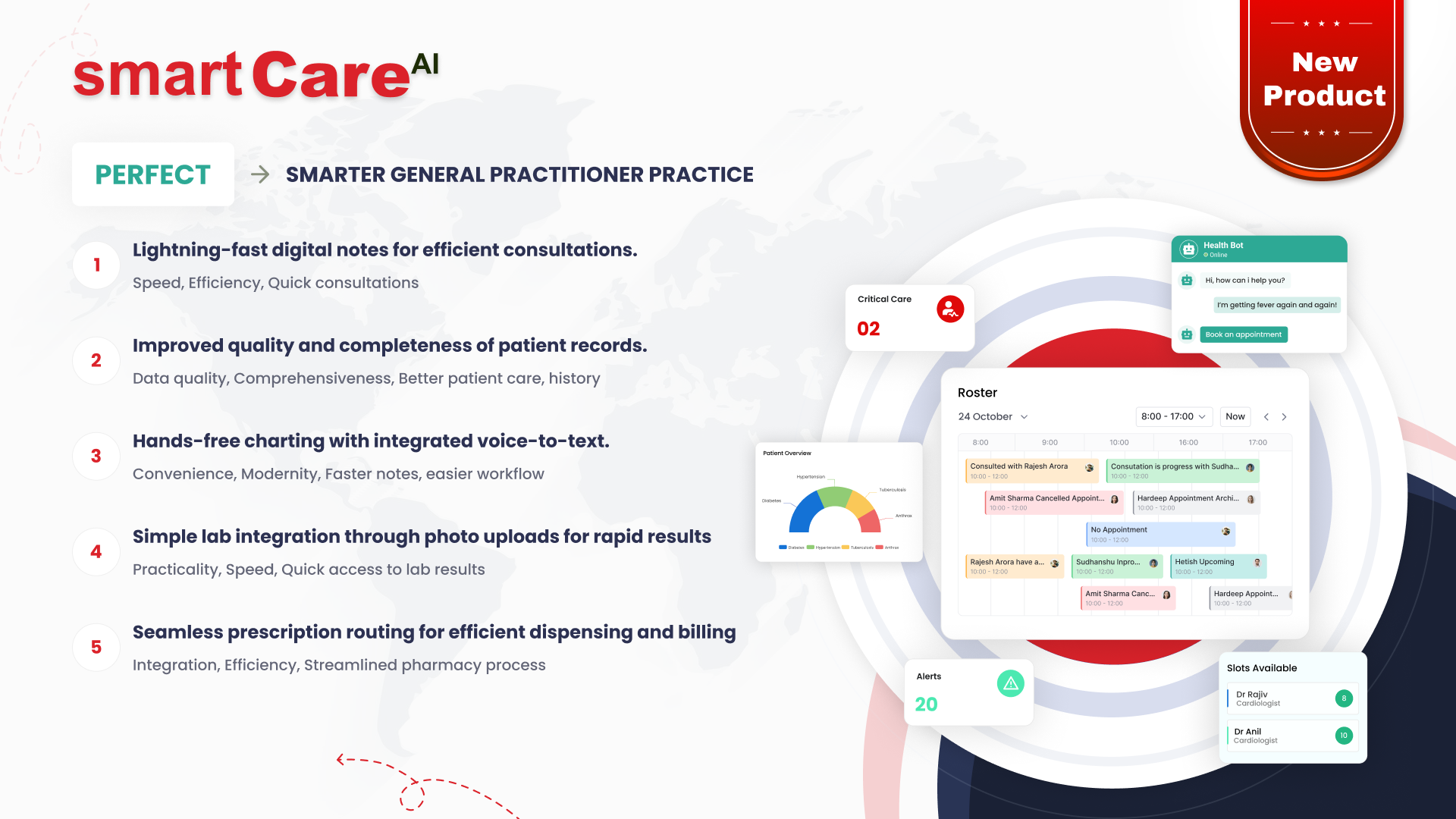
Posted On January 28, 2025
How Can AI and ML Reduce Healthcare Operational Costs?
In today’s rapidly evolving healthcare landscape, artificial intelligence (AI) and machine learning (ML) are proving to be invaluable tools in reducing operational costs. By enhancing efficiency, minimising waste, and streamlining complex processes, these technologies are driving a revolution in the way healthcare organisations operate. Let’s delve into the specific ways AI and ML are achieving these cost-saving transformations.
Understanding the Role of AI and ML in Healthcare Cost Reduction
AI and ML are designed to process vast amounts of data and extract actionable insights, making them ideal for tackling some of the most pressing financial challenges in healthcare. These technologies can automate repetitive tasks, reduce errors, and provide predictive insights, all of which contribute to cost savings. For instance, predictive analytics can help healthcare providers anticipate patient needs and optimise resource allocation, resulting in fewer unnecessary expenses.
Streamlining Administrative Tasks with AI-Powered Solutions
Administrative tasks, such as scheduling, billing, and patient data management, often consume a significant portion of healthcare budgets. AI-powered tools can automate these processes, reducing the need for manual intervention and minimising human error. For example, AI chatbots can handle appointment scheduling and patient inquiries, freeing up staff time and cutting down administrative costs.
Optimising Revenue Cycle Management Through Machine Learning
Revenue cycle management (RCM) is a critical area where healthcare organisations often lose money due to inefficiencies and errors. ML algorithms can analyse billing data to identify patterns and flag anomalies, helping organisations address issues before they escalate. By improving claim processing and ensuring accurate billing, ML-driven RCM solutions can significantly boost financial performance.
How Predictive Analytics Can Lower Healthcare Expenditure
Predictive analytics, powered by AI and ML, enables healthcare providers to foresee potential health issues and intervene early, reducing costly emergency care and hospitalisations. For instance, by analysing patient history and lifestyle data, predictive models can identify individuals at risk for chronic conditions and recommend preventive measures, ultimately lowering treatment costs.
Reducing Diagnostic Errors with AI for Cost Efficiency
Diagnostic errors are not only a leading cause of patient harm but also a significant contributor to increased healthcare costs. AI systems, equipped with advanced imaging analysis and pattern recognition capabilities, can assist doctors in making more accurate diagnoses. By reducing misdiagnoses and unnecessary tests, AI can help healthcare organisations save both time and money.
AI and ML in Automating Repetitive Healthcare Processes
Healthcare operations often involve a multitude of repetitive tasks, such as patient scheduling, billing, and claim processing. These manual processes can be time-consuming and prone to errors, leading to inefficiencies and increased costs. AI-powered systems, such as robotic process automation (RPA), streamline these tasks by handling them with speed and accuracy.
For instance, automated appointment scheduling can reduce administrative burdens on staff, while AI-enabled billing systems ensure error-free claim submissions, minimising the risk of rejections and payment delays. By automating routine operations, healthcare providers can significantly cut labour costs and allocate resources more effectively.
Improving Patient Care While Cutting Costs Using Advanced AI Models
AI and ML technologies play a vital role in improving patient outcomes while reducing costs. Predictive analytics, powered by ML algorithms, can identify at-risk patients and recommend preventive measures. This approach reduces the need for expensive treatments and hospital readmissions, ultimately saving money for both providers and patients.
Additionally, AI-powered virtual assistants and chatbots provide 24/7 patient support, reducing the need for extensive human intervention. These tools enhance patient satisfaction and decrease costs associated with traditional customer service models.
Leveraging Machine Learning for Smarter Inventory Management in Healthcare
Inventory mismanagement can lead to overstocking, understocking, or wastage of medical supplies, all of which contribute to increased operational costs. ML algorithms analyse historical usage data, predict future demand, and optimise inventory levels to ensure efficient stock management.
For example, predictive ML models can alert hospitals when supplies are running low, allowing timely restocking without over-purchasing. This not only saves money but also ensures that critical medical supplies are always available when needed, enhancing patient care.
How AI-Driven Telemedicine Reduces Operational Overheads
Telemedicine has revolutionised healthcare delivery, and AI further enhances its efficiency. AI-powered platforms facilitate virtual consultations, remote monitoring, and digital diagnostics, reducing the need for physical visits and infrastructure costs.
By integrating ML-based tools, telemedicine platforms can personalise patient care plans and provide accurate remote diagnoses. This reduces unnecessary hospital admissions and associated costs, making healthcare more accessible and affordable for patients in urban and rural settings alike.
The Long-Term Cost Benefits of Implementing AI and ML in Healthcare
Investing in AI and ML technologies may require upfront expenditure, but the long-term financial benefits are substantial. By reducing errors, improving operational efficiency, and enhancing patient care, AI and ML offer sustainable cost-saving solutions. These technologies also enable healthcare providers to scale their services without proportionally increasing costs.
Furthermore, the continuous advancements in AI and ML mean that systems become more efficient over time, providing even greater value to healthcare organisations. This ensures that providers can remain competitive while delivering high-quality, cost-effective care.
Conclusion
AI and ML are not just technological advancements; they are strategic tools that enable healthcare providers to deliver efficient and affordable care. From automating repetitive processes to optimising inventory and enhancing telemedicine services, these technologies reduce operational costs while maintaining quality. As the healthcare industry continues to evolve, integrating AI and ML into operational workflows is essential for sustainability and growth.
For more insights on AI and ML solutions for healthcare, visit smartdatainc.com.
